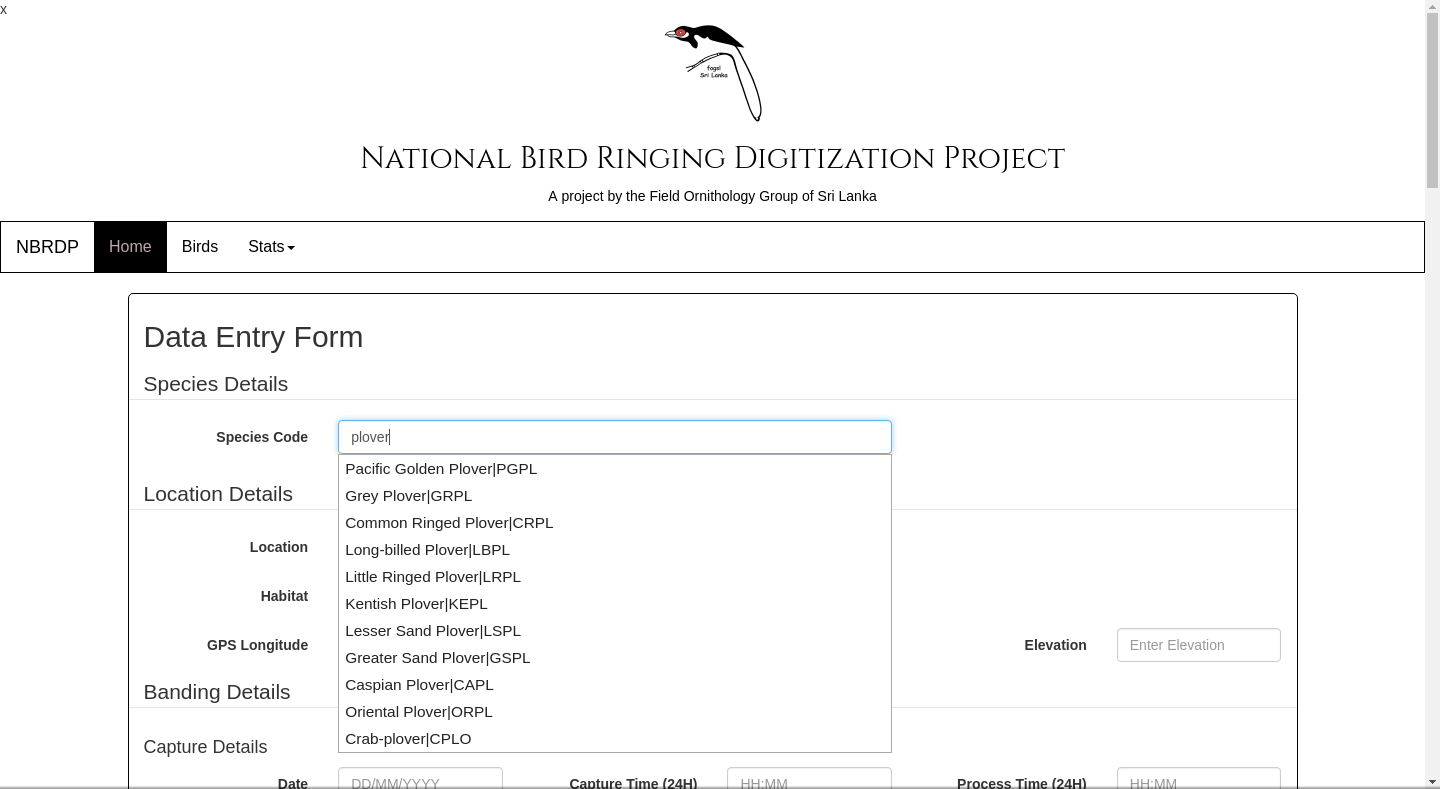Coding Ornithology
Apr 19 2016

Jeewantha Bandara
I‘ve never been the most ardent birder. Compared to most of my colleagues who study Zoology with me, you could say that my knowledge of our feathered friends is rather poor. Though birds don’t hold my attention for the usual reasons like behaviour, biology and sheer aesthetic value, they do fascinate me in another way.
Ornithology is one of the scientific fields to which non-scientists can contribute heavily. Citizen science is held in high regard in Ornithology because it has been the source of many important discoveries and observations. There have been many a time that an important bird was reported to a birding society or a government agency by a regular citizen. This is the reason that FOGSL has always emphasized taking birding to the masses. Giving everyday citizens the tools to contribute towards ornithology has been one of FOGSL’s primary goals. This is where my interests overlapped with those of FOGSL which is, Building tools to enable and enrich ornithology data gathered from the wider public.
I’m a programmer at heart. So I’m always thinking about how to solve problems using technology. It was during a bird ringing session held at Bundala National Park that I first understood the importance of data tools and information technology to Ornithology. The wealth of information that can be obtained from a single bird is amazing. And if you can properly store that information and have the tools to analyze it later, it would be invaluable. So, I decided that this would become a pet project. The website that you are reading this on is the first step of that project. The next part of the project will be the actual development and deployment of tools to enter, process, retrieve, and analyze ornithological data.
FOGSL CitSci (Citizen Science) Project
Amateur birders usually face the dilemma of species identification in the field. The focus of here would be to create a web/mobile application that can be used by amateur birders to address this issue. The application will assist the birders using descriptions of bird species, stock photographs, distribution maps of species, and vocal recordings. The application would allow the entry of a bird’s basic information and the location of observation.
Migrant Watch App
Migrant Watch is a program carried out by birders during the migratory season. The program aims to record migrant visitors to Sri Lanka. It usually updates all the recorded information on e-bird and stores the raw data locally. Though e-bird is highly useful, it is not configurable to our needs. Therefore the proposed Migrant Watch App will feature a central database that can be used to enter and analyze data, making it configurable to our needs. The application will be automated to periodically send the information to e-bird so that the data between the two sources remain consistent.
National Bird Ringing Digitization Project
The National Bird Ringing Program has been carried out in Bundala National Park for more than 10 years. Its aim is to capture and ring migratory birds who visit Sri Lanka. Nearly 4000 individuals captures and recordings have been made in this program up to now. This project aims to digitize those manual records and let researchers access them for analysis. Once deployed it will be tested in the field for robustness and will aid in future data entry and analysis from the field itself

These 3 projects will be slowly worked on and their monthly progress will be reported at the FOGSL meetings (Saturday of the last week every month) and on this blog.
One of the few things that this project has taught me is that anyone can contribute in some way to a worthy cause. You may think that it’s not worth your time or that it’s not for you, but it might actually have something that captures your imagination allowing you to contribute towards it. That experience in itself has been pretty great
Cheers

Jeewantha Bandara
Undergraduate Student
Department of Zoology
University of Colombo
2016-04-19
